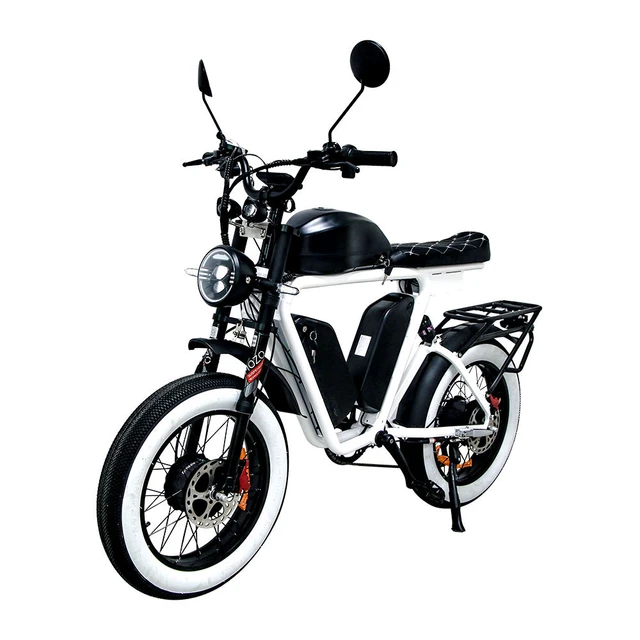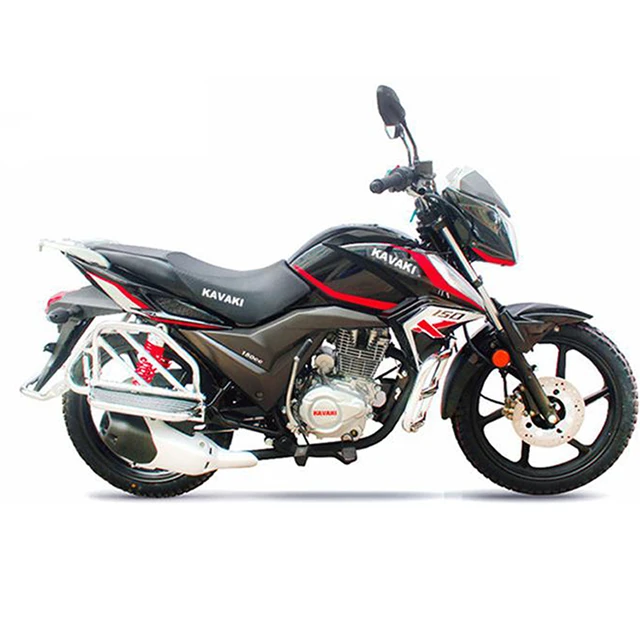Introduction
Transporting a motorcycle requires proper strapping techniques to ensure its stability and prevent any damage during transit. Whether you are using a trailer, truck bed, or motorcycle carrier, securely strapping down your bike is essential for a safe journey. In this guide, we will explore the best methods for strapping down a motorcycle. From choosing the right straps and anchor points to correct tensioning and balancing, we will provide specific recommendations to help you securely transport your motorcycle.
What is the best way to tie down a motorcycle?
Choosing the Right Straps
1.1. Ratchet Straps
Ratchet straps are commonly used for securing motorcycles due to their ease of use and secure locking mechanism. Look for straps with a high weight capacity and durable materials such as nylon or polyester. Ensure that they have corrosion-resistant metal components for long-lasting performance.
1.2. Soft Loops
Soft loops are essential for protecting your motorcycle’s handlebars or other delicate parts from damage caused by the straps. These loops wrap around the handlebars or other areas of the bike, providing a secure anchor point without causing any scratches or dents.
1.3. Cam Buckle Straps
Cam buckle straps are an alternative to ratchet straps. They use a cam mechanism to secure the strap in place. While they may not provide the same amount of tension as ratchet straps, they are still a reliable option for securing your motorcycle.
Anchor Points and Attachment
2.1. Secure Anchor Points
Ensure that the anchor points you use for securing your motorcycle are strong and securely mounted. Common anchor points include the frame, handlebars, or foot pegs. Consult your motorcycle’s owner manual or manufacturer for guidance on suitable anchor points.
2.2. Soft and Secure Contact
When attaching straps to your motorcycle, make sure they have soft loops or protective covers to prevent any direct contact with the bike’s surfaces. This protects against potential scratches or damage caused by the straps rubbing against the bodywork.
2.3. Equal Tension Distribution
Distribute the tension evenly across the straps and anchor points to prevent any imbalance. Make sure the straps are attached at various points on your motorcycle to create a stable and secure connection.
Tensioning and Balancing
3.1. Tensioning the Straps
Use the ratchet or cam buckle mechanism to tighten the straps securely. Apply enough tension to prevent any movement or shifting during transit, but be careful not to overtighten, as this can strain the straps or compress the motorcycle’s suspension.
3.2. Check for Stability
Once the straps are tensioned, check for stability by gently pushing and pulling the motorcycle. It should feel secure with minimal movement. If you notice any significant shifting, readjust the straps and tension them again to ensure a stable hold.
3.3. Balance the Load
Properly balancing the load is crucial for safe transportation. When securing your motorcycle, ensure that the weight is evenly distributed. Adjust the straps and position the motorcycle accordingly to maintain balance and stability during transit.
Additional Precautions
4.1. Protect Vulnerable Areas
Use additional padding or protective covers to safeguard vulnerable areas of your motorcycle. This includes the fairings, mirrors, or any other parts that may be susceptible to damage during transit. Secure the padding with straps or bungee cords.
4.2. Wheel Chocks
Consider using wheel chocks to stabilize the front wheel of your motorcycle. Wheel chocks help to prevent the motorcycle from rolling or shifting during transit, providing an additional layer of security.
4.3. Test the Securement
Before hitting the road, perform a final check of the securement. Give the motorcycle a firm shake and test the tension of the straps. If everything feels secure, you can proceed confidently with your journey.

Regular Monitoring
Periodic Checks
During transit, periodically check the straps and the motorcycle’s securement. Stop at safe intervals to inspect the straps for any signs of loosening, wear, or damage. Retighten or readjust as necessary to maintain a safe and secure hold.
Adjust as Needed
If you notice any changes in the tension or stability of the motorcycle during transit, make necessary adjustments to ensure its safety. Factors such as road conditions or changes in weight distribution may require occasional readjustment of the straps.
Be Mindful of Weather Conditions
During inclement weather, such as heavy rain or strong winds, be extra cautious and check the securement more frequently. These conditions can affect the stability of the motorcycle and the tension of the straps.

Professional Assistance
If Unsure, Seek Professional Help
If you are unsure about the proper strapping techniques or lack experience in securing motorcycles for transportation, it is advisable to seek professional assistance. Professional motorcycle haulers or experienced motorcycle enthusiasts can provide valuable guidance and ensure that your bike is securely strapped down. If you are a motorcycle beginner, it is essential to seek help.
Motorcycle Tie-Down Systems
Consider investing in motorcycle-specific tie-down systems designed to simplify the strapping process. These systems often include integrated wheel chocks or specialized anchor points, making it easier to secure your motorcycle safely and efficiently.
Training and Education
Attend workshops or training sessions on motorcycle transportation and securement techniques. Learning from professionals or experienced riders can provide you with valuable insights and hands-on guidance, allowing you to gain confidence and expertise in strapping down your motorcycle.

Legal Requirements and Regulations
Know the Laws and Regulations
Familiarize yourself with the specific laws and regulations regarding motorcycle transportation in your region or country. How to strap down motorcycle and where to strap down a motorcycle? Some areas may have specific requirements for securing motorcycles, such as minimum strap requirements, motorcycle helmet requirements or weight distribution guidelines.
Compliance with Trailer or Carrier Regulations
If you are using a trailer or motorcycle carrier, ensure that it complies with local regulations and safety standards. This includes having appropriate lighting, reflectors, and secure attachment points for the straps.
Adhere to Load Capacity Limits
Respect load capacity limits for both your vehicle and the trailer or carrier being used. Overloading can compromise the stability and safety of the entire setup, increasing the risk of accidents and damage to your motorcycle.

Ensuring no sharp edges come in contact with the straps
Securing your motorcycle for transport in 2024 requires straps that are strong enough for the weight of the bike and won’t scratch the paint or damage other parts. Here’s a guide to keep your motorcycle safe:
Protecting Your Motorcycle from Straps
- Soft Loops or Tie-Downs: These straps are preferable because they don’t have metal hooks that can scratch your motorcycle. Soft loops or tie-downs typically wrap around a solid part of the motorcycle frame or suspension, and the strap itself cinches down to secure it.
- Padding: If you must use straps with hooks, use protective padding under the hooks to prevent scratches or dents on your motorcycle. Pipe insulation or pool noodles work well for this purpose.
Strapping Your Motorcycle
-
Identify Secure Attachment Points: Consult your owner’s manual to locate the designated frame locations for motorcycle tie-down straps. These points are typically located on the handlebars, fork tubes, or the frame itself, and are designed to handle the stress of securing the motorcycle during transport.
-
Attach the Straps: Once you’ve identified the appropriate tie-down points, attach the straps securely. If you’re using straps with hooks, make sure the padded areas are between the hooks and your motorcycle.
-
Tighten the Straps: Tighten the straps evenly, avoiding over-tightening which can damage your suspension. The motorcycle should be secure, but not compressed.
-
Double Check: Once you’ve tightened the straps, bounce the front and rear ends of the motorcycle gently to make sure it’s secure. Re-tighten the straps if necessary.
Some additional tips for safely transporting your motorcycle in 2024:
- Use high-quality straps: Don’t skimp on the straps. Make sure they are rated for the weight of your motorcycle, and that they are in good condition, free of any tears or fraying.
- Use a chock: A chock will help to prevent your motorcycle from rolling forward or backward during transport.
- Secure the handlebars: Bungee cords to secure the handlebars to the frame of the motorcycle. This will help to prevent them from turning during transport.

Properly strapping down your motorcycle is crucial for its safe transportation. Choosing the right, securing them to strong anchor points, and applying proper tension are essential for a secure hold. Balancing the load and taking additional precautions such as using soft loops, protective padding, and wheel chocks further enhance the safety of your motorcycle during transit. Regularly monitoring the securement and making necessary adjustments ensures a safe journey. By following these recommendations and paying attention to the specific needs of your motorcycle, you can confidently transport your bike, knowing it is securely strapped down and protected from potential damage.
